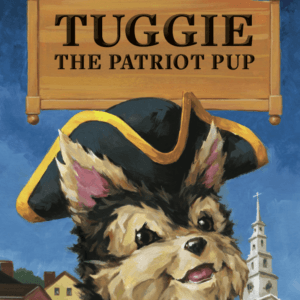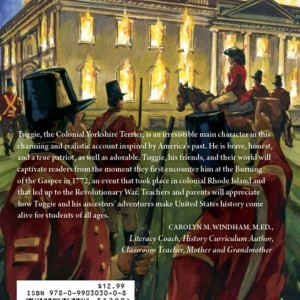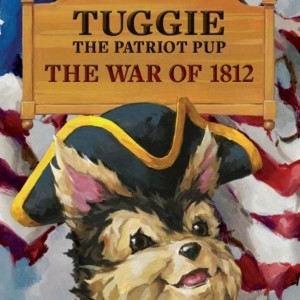Product Description
All 3 Books for only $30
Book 1
HMS Gaspee
The HMS Gaspee and her commander, Lt. William Dudingston, were sent by King George III from England to the Rhode Island seacoast in March of 1772. They were to enforce Britain’s trade laws and collect taxes. On land and on sea Lt. Dudington followed King George’s orders and repeatedly harassed the local population telling them what they could and could not do. This angered the Rhode Island Colonists to a breaking point.
On June 9th the HMS Gaspee became stranded on a sandbar off Namquid Point (now Gaspee Point) and would not be able to sail until the tide came in the next day. The HMS Gaspee distress was immediately reported to John Brown who was a powerful merchant and trader in Providence, Rhode Island. Upon hearing the news he held a meeting in a local tavern to plan the capture of Lt. Dudingston and the crew from the grounded ship. If they could accomplish that, the Colonists would then proceed to set fire to and sink the ship. All went as planned. In the dark of the night on June 9th, a surprised Lt. Dudingston and his crew were arrested by the Colonists and removed from the ship. Then, in the early morning of June 10th the HMS Gaspee was blown up where she lay.
Attempts and a reward from King George to learn which Colonists committed this crime were unsuccessful. The majority of Rhode Island Colonists were tired of the King George’s unfair taxation and silently supported the confinement of the crew and destruction of the HMS Gaspee.
Many American historians consider these events of June 9th and 10th 1772 to be the original act of the American Revolution.
Book 2
About the War of 1812
Since 1803 the English Navy been capturing United States ships illegally and not returning the goods or the ships. Then the English forced the captured US navy men to serve against their will in the British navy. Because of these continued, hostile acts on June 18, 1812, then American president James Madison declared war on England. This declaration of war and the following years to 1815 are known in American history as The War of 1812.
In 1814 Britain turned it’s full military attention to defeating the Americans on their own soil. Large numbers of British troops landed in Maryland and proceeded south to Washington, D.C. The English achieved victory there by burning the majority of the Capitol City to the ground. But the War of 1812 was not over. On September 13, 1814 the English bombarded a fort in Baltimore Maryland for 25 hours. But the following morning, United states soldiers hoisted a shredded American flag above the fort to show the British they were not defeated. The sight of the shredded flag inspired an American named Francis Scott Key to write a poem titled “The Star-Spangled Banner.” Set to music, “The Star Spangled Banner” became the United States National Anthem.
A treaty between the United States and England was signed in February of 1815. The United States had fought it’s “Second American Revolution” and had remained a sovereign nation.
Book 3
About the Mason Dixon Line
The Mason Dixon line is a property line that was surveyed and was decided in the 1770’s by James Mason and Jeremiah Dixon. In the years that lead up to the The United States Civil War, the majority of states north of the Mason Dixon line had by states votes declared slavery was illegal. In direct opposition, the majority of states south of the Mason Dixon line had voted on slavery and decided it was legal. The majority of these southern states declared they were no longer members of the union that was the United States of America. This declaration began the United States Civil War.





















Reviews
There are no reviews yet.